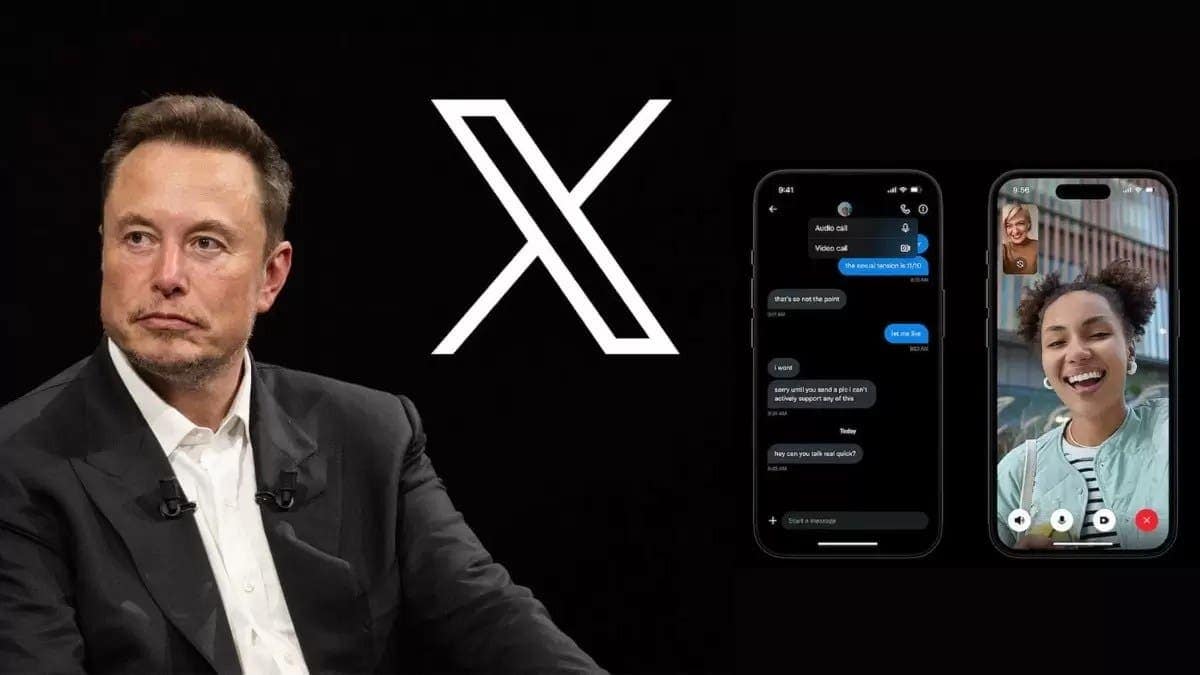
Elon Musk’s ambition to transform X/Twitter into a comprehensive “super app” is no secret. Following the platform’s foray into voice and video calling on iOS devices in October 2023, these features have finally landed on Android. Bringing a new dimension to communication within the X/Twitter ecosystem.
Making the Call: How X/Twitter’s Voice and Video Calling Works
Image Credit: techmgzn
While an official announcement from X/Twitter regarding the Android rollout is yet to arrive, an employee’s tweet from Elon Musk’s Twitter account hinted at the gradual deployment, inviting users to “update your application and call your mother.” This lighthearted prompt might oversimplify the reality, but it accurately points towards the core functionality. Making and receiving voice and video calls directly through the X/Twitter messaging interface.
However, there’s a crucial caveat – this feature comes with a price tag. Access to voice and video calling is exclusive to X Premium subscribers. With monthly fees starting at €8 for the basic plan and €16 for Premium+. Annual subscriptions offer some cost savings, dropping to €84 and €168 respectively. The good news is that receiving calls doesn’t require a paid subscription. Making X/Twitter a potentially convenient platform for impromptu conversations even with non-paying users.
The Potential and Pitfalls of In-App Calling
The ability to directly call someone within X/Twitter presents both advantages and potential drawbacks. On the positive side, it offers a seamless way to connect with others for live conversations. Especially when voice messages feel insufficient and phone numbers aren’t readily available. However, given X/Twitter’s ongoing struggles with spam and misinformation, the introduction of voice and video calling raises concerns about its potential misuse. Scammers or malicious actors could exploit this feature for unsolicited calls and deceptive interactions.
Gizchina News of the week
To mitigate these risks, X/Twitter provides granular control over call settings within the messaging interface. Users can choose to receive calls from anyone with a Premium subscription, limit them to their followers, or restrict them solely to contacts saved on their phone. Exercising caution and adopting a selective approach to call permissions is crucial for a safe and positive experience.
The Road Ahead: Will X/Twitter’s Calling Features Take Flight?
With voice and video calling now available on both Android and iOS, it remains to be seen how these features will fare in terms of user adoption and overall impact. Despite being present on iOS for several months, there hasn’t been a significant buzz surrounding its usage. Whether X/Twitter can successfully integrate these functionalities into its existing user base and attract new audiences through them remains an open question.
The success of X/Twitter’s voice and video calling features will hinge on several factors, including:
Addressing spam and abuse concerns. X/Twitter must proactively address potential misuse of the calling system through effective moderation tools and user education.
Enhancing call quality and functionality. Providing a smooth and reliable calling experience with clear audio and video is essential for user satisfaction.
Promoting the feature and its benefits. X/Twitter should effectively communicate the advantages of in-app calling and showcase its potential uses beyond casual conversations.
Ultimately, the integration of voice and video calling into X/Twitter represents another step towards its evolution into a multifaceted platform. Whether it becomes a widely used communication tool or remains a niche feature will depend on X/Twitter’s ability to address user concerns, optimize the calling experience, and effectively demonstrate its value proposition.
Disclaimer: We may be compensated by some of the companies whose products we talk about, but our articles and reviews are always our honest opinions. For more details, you can check out our editorial guidelines and learn about how we use affiliate links.






